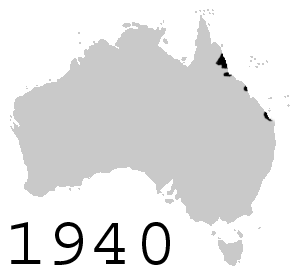email: JDIAMOND@GEOG.UCLA.EDU
Interesting Publications:
Diamond (1999). Dirty eating for healthy living. Nature 400: 120-121.
Diamond (1987). The Worst Mistake in the History of the Human Race. Discover. 64-66
Here's a reminder to myself, always.
From Collapse (Diamond, 2005:9)
"... both extreme sides in this controversy - the racists and the believers in a past eden - are committing the error of viewing past indigenous people as fundamentally different from (whether inferior to or superior to) modern First World peoples. Managing environmental resources sustainably has always been difficult"
A possible factor to consider and remember - Diamond's Five-point framework of contributing factors to understanding environmental collapse.
From Collapse (Diamond, 2005:11)
"...Four of those sets of factors - environmental damage, climate change, hostile neighbors, and friendly trade partners - may or may not prove significant for a particular society. The fifth set of factors - the society's responses to its environmental problems - always prove significant."
A summary of 12 environmental threats in the world:
From Collapse (Diamond, 2005:6-7)I don't quite understand the last point yet but I suppose there will be further elaboration in the book. Point 4 and 5 are similar in essence. I wonder what are the large scale impact of point 6 except for species extinction like the dodo and other Mauritius birds or the Kakapo Parrot of New Zealand? Of course I musn't forget the cane toad at Australia or Guam's brown tree snake crisis.
"Traditional Issues"
1. deforestation and habitat destruction
2. soil problems (erosion, salinization, fertility loss)
3. water management problems
4. overhunting
5. overfishing
6. effects of introduced species on native species
7. human population growth
8. increased per capita impact of people
"Modern Issues"
9. human-caused climate change
10. buildup of toxic chemicals in the environment
11. energy shortages
12. full human utilization of the Earth's photosynthetic capacity

The spread of Cane Toads in Australia from 1940 to 1980 in 5-year intervals

No comments:
Post a Comment